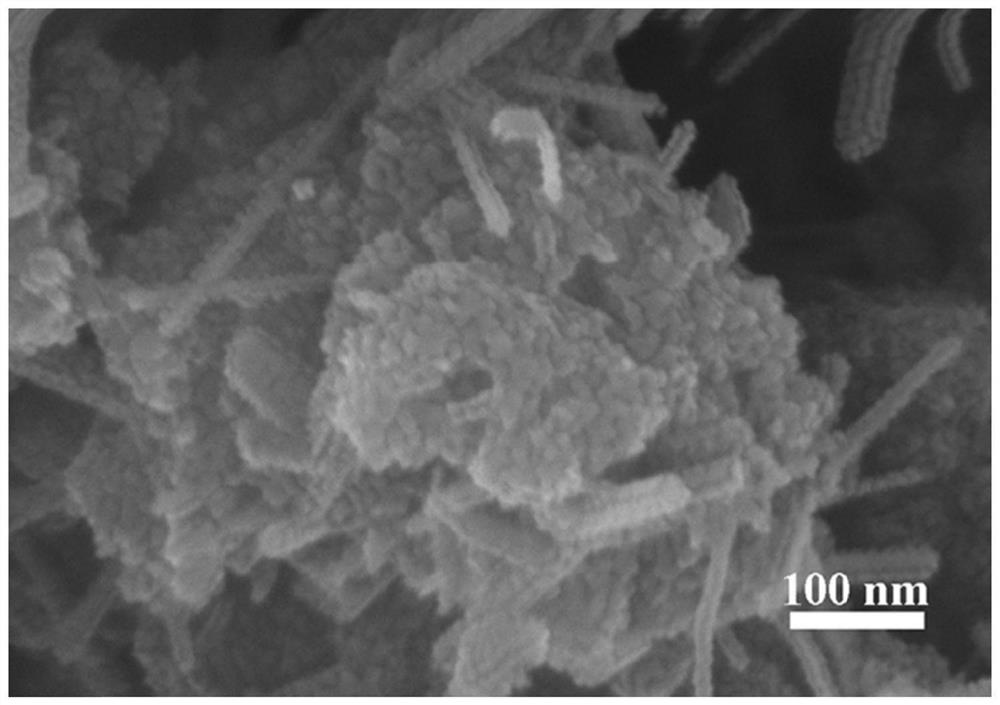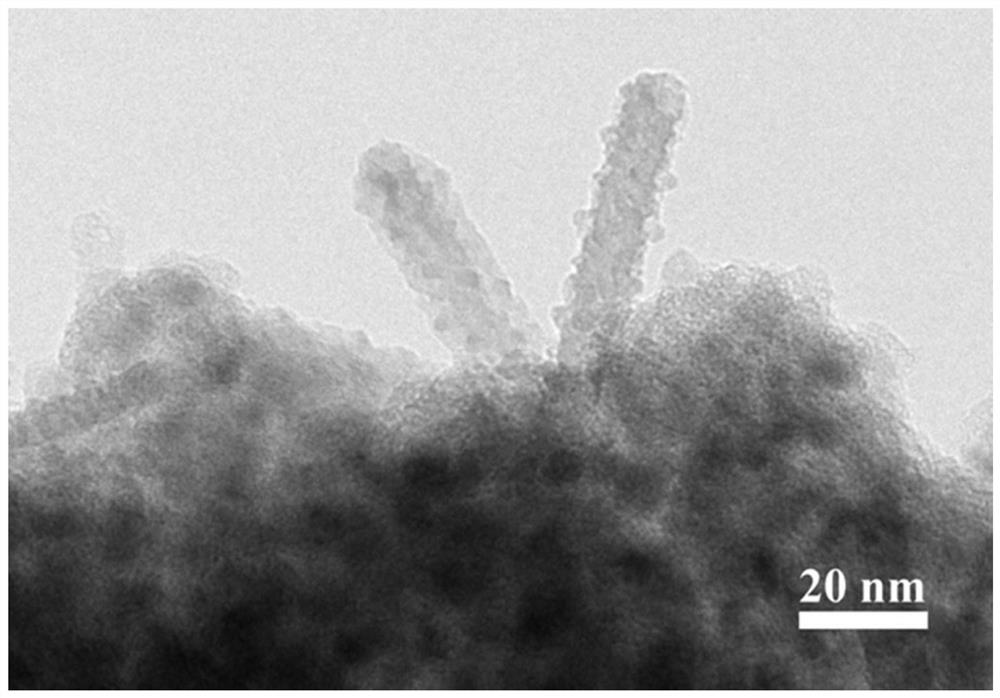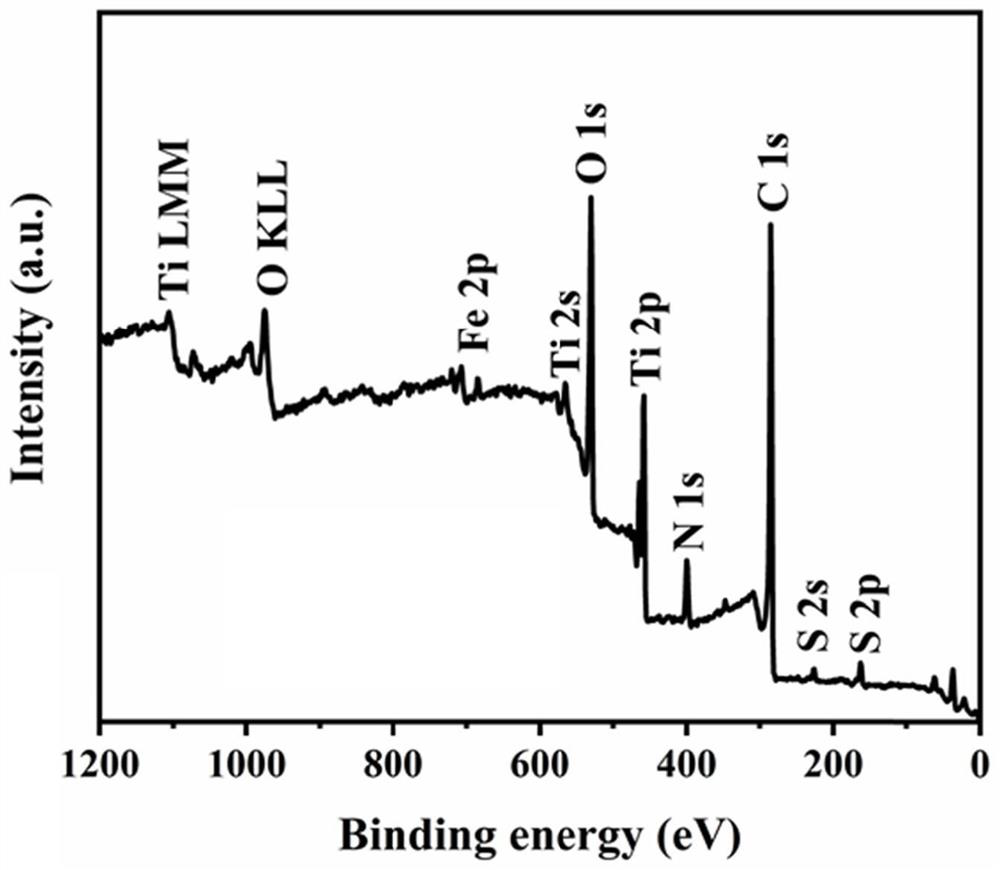A kind of preparation method and application of titanium dioxide/carbon/ferrous disulfide composite material
A technology of ferrous disulfide and composite materials, which is applied in the field of lithium-ion batteries and lithium-ion battery electrode materials, can solve the problems of electrical performance to be improved, and achieve the effects of low cost, high specific capacitance and high repetition rate
- Summary
- Abstract
- Description
- Claims
- Application Information
AI Technical Summary
Problems solved by technology
Method used
Image
Examples
Embodiment 1
[0042] This embodiment prepares TiO 2 / C / FeS 2 The steps for composite materials are as follows:
[0043] S1. Add 0.3g of P25 TiO 2 React with 60mL of 10mol / L sodium hydroxide solution at 150°C for 24h. After the reaction, centrifuge the reaction mixture and wash the solid with deionized water to neutrality, then add the solid to 100mL of 0.1mol / L hydrochloric acid solution for Ion exchange for 24h to get H 2 Ti 3 o 7 Suspension. H 2 Ti 3 o 7 The suspension was centrifuged and the centrifuged solid was washed with deionized water until neutral.
[0044] S2, in the deionized water of 50mL, add the Tris of 5mmol tris (Tris), then add a certain amount of 0.1mol / L hydrochloric acid solution, prepare the Tris-HCl buffer solution that pH is 8.5, will obtain in the step S1 h 2 Ti 3 o 7 The solid was added to the above-mentioned Tris-HCl buffer solution, stirred evenly, and then 0.2 g of dopamine hydrochloride was added, and then magnetic stirring was continued for 48 h. ...
Embodiment 2
[0068] The difference between this embodiment and embodiment 1 is: in step S4, FeCl 2 4H 2 The consumption of O is 99.4mg, and the consumption of thioacetamide is 56.7mg (namely FeCl 2 4H 2 The mass ratio of O and thioacetamide is 1:0.57); Other contents are identical.
Embodiment 3
[0070] The difference between this embodiment and embodiment 1 is: in step S4, FeCl 2 4H 2 The consumption of O is 99.4mg, and the consumption of thioacetamide is 93.4mg (being FeCl 2 4H 2 The mass ratio of O and thioacetamide is 1:0.94); Other contents are identical.
PUM
| Property | Measurement | Unit |
|---|---|---|
| Discharge capacity | aaaaa | aaaaa |
| Specific capacitance | aaaaa | aaaaa |
Abstract
Description
Claims
Application Information
 Login to View More
Login to View More - Generate Ideas
- Intellectual Property
- Life Sciences
- Materials
- Tech Scout
- Unparalleled Data Quality
- Higher Quality Content
- 60% Fewer Hallucinations
Browse by: Latest US Patents, China's latest patents, Technical Efficacy Thesaurus, Application Domain, Technology Topic, Popular Technical Reports.
© 2025 PatSnap. All rights reserved.Legal|Privacy policy|Modern Slavery Act Transparency Statement|Sitemap|About US| Contact US: help@patsnap.com



